EJ440 ElectroJet
The EJ440 as well as the EJ445 is part of a series of projects resulting from the combination of the EJ110 and the model EJ150. Both single-seat and designed between 2013 and 2014 as alternative idea to the previous tilting rotor projects named CellCraft.
The serie EJ (ElectroJet) are designed having their own specific characteristics thanks to the experimentation resulting through two small remote-controlled four-rotors aircraft built in January 2011, (Icarus) and in February 2013 (Phegasus) which gave me the opportunity to verify, through smaller flying prototype, some of the technologies that could be developed in the future on larger scale machines. Many other projects are currently underway, one of which is a remote controlled Quad-rotor for civilian applications, provided of tilting rotors with limited excurtion, but in this regard a special section will be dedicated to these machines further ahead.
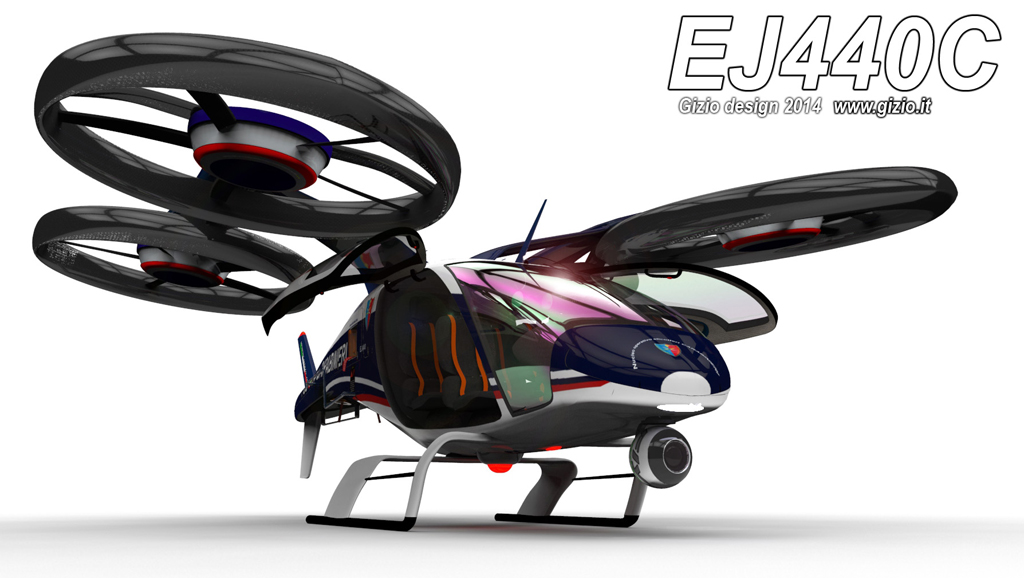
The fundamental principle on which all EJ (Electro-Jet) aircraft are based on remains the same since the first two projects of mine issued 1996. Again, the configuration I have defined is known as ERTLA (Electro -Rotor Transmission Less Aircraft) or TLA (Transmission Less Aircraft), in other words it's an aircraft not equipped with any mechanical transmission system. On these type of transmission-less aircraft there are no mechanical parts such as reduction boxes; shafts; gears etc, but only electric rotors, composed of digitally controlled three-phase induction electric motors and an automatic flight management system called AFC (Automatic Flight Control).
This concept
was born in 1996 with my first project, the G150
CellCraft, a quadrotor aircraft with tilting rotor-rings,
the first project in the world of electro-rotor aircraft and the DDRH
(DDVL) which was instead a twin electro-rotors with
limited tilting angle and rigid rings.
Even with the EJ (Electro-Jet)
projects the basic idea remains belonged to the ERTLA
concept, however they differ from the CellCraft
in having a rigid ring configuration connected with the fuselage, instead
than of tilting rotors.
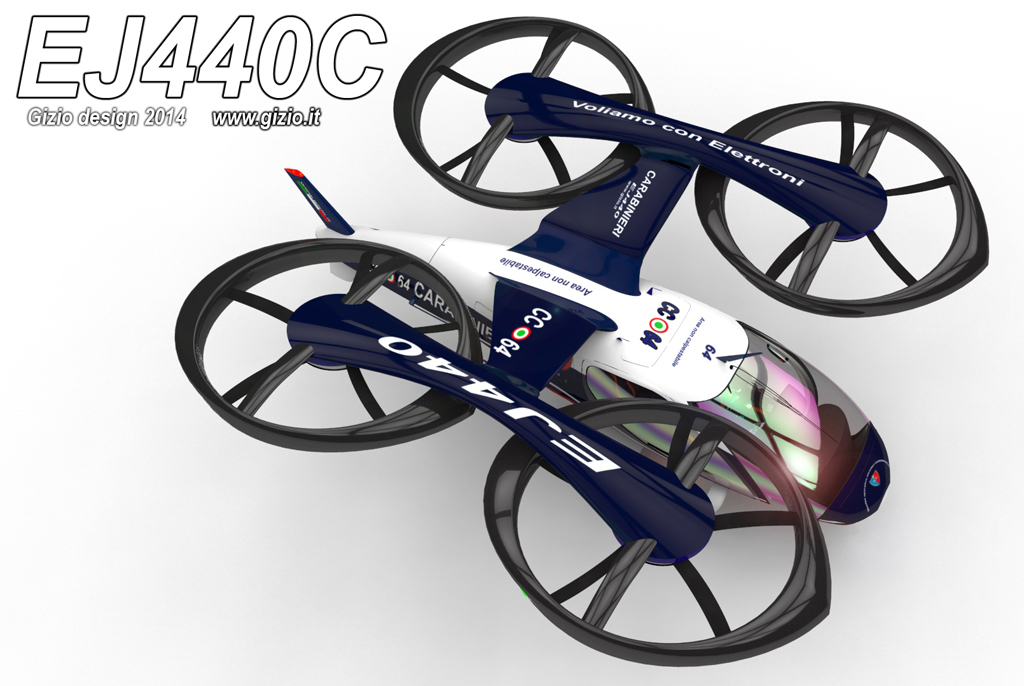
Behavior
Before
continuing further more, it is very important to dispel some myths about
multirotor aircraft, these are indeed extremely unstable machines rather
then you might think.
A multi-rotor is a machine extremely unstable, since the rotation of the
four rotors (or less or more) produces four differentiated tourques, which
influence or "disturb" each of the rotor compromising the stability
of the flying platform, in other words making the control of the yaw almost
impossible if done manually. A further instability factor is given by
the variation in lift that is generated on each of the rotors and by the
turbulences that they produce, with constant aerodynamic disturbances
and interferences involving constantly all the four rotors.
In the first experiments that took place in the 1950s, a multirotor aircraft
required the use of four pilots for acceptable level of control of the
stability which on that prototype remained rather confined to short flights
within certain limitations.
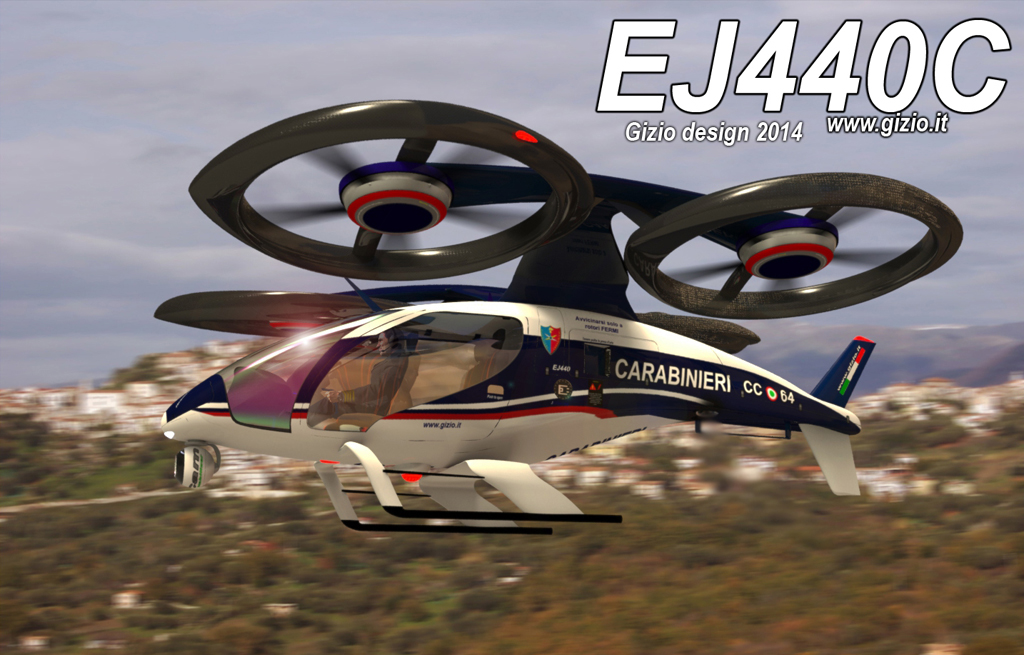
In
1996 I did not have a technology that would allow me
to directly experience these problems, as today I can do with my small
remote controlled multi rotors aircraft, and I couldn't imagine the construction
or even the market for a such type of machine. However, I was absolutely
convinced of the development of ERTLA- aircraft type.
The digital control systems, computers and the miniaturization of electronic
components, in addition the development of an electric motor suitable
for this type of aircraft was just pure immagination. At that time there
was no way to easily solve the serious problems of dynamic and static
stability of which the Multicopters or Multirotors
are subject or even providing the best propulsion.
In order to be perfectly handled a multi-rotor aircraft in flight should
be equipped with a dynamic stabilization system, that is capable of keeping
in balance the forces generating the thrust through the force of the rotors,
ensuring stable behavior and an acceptable attitude, but also be capable
to perform extreme maneuvers when necessary in complete safety like flying
from point A to point B without any kind of disturbance or unstable attitude,
and I can guarantee that without electronics even a simple trajectory
some years ago was quite impossible to obtain by a multirotor flying machine.
Both CellCraft and EJs projects obviously respond to these requerements, indeed these projects are based primarily on this technological platform. Today is very easy to pilot machines like these since the AFC (Automatic Flight Control) system corrects any inappropriate maneuver or any inconvenient attitude, keeping the aircraft in flight always parallel respect to a plane, allowing moreover an expert pilot to manage it in a much more flexible way.
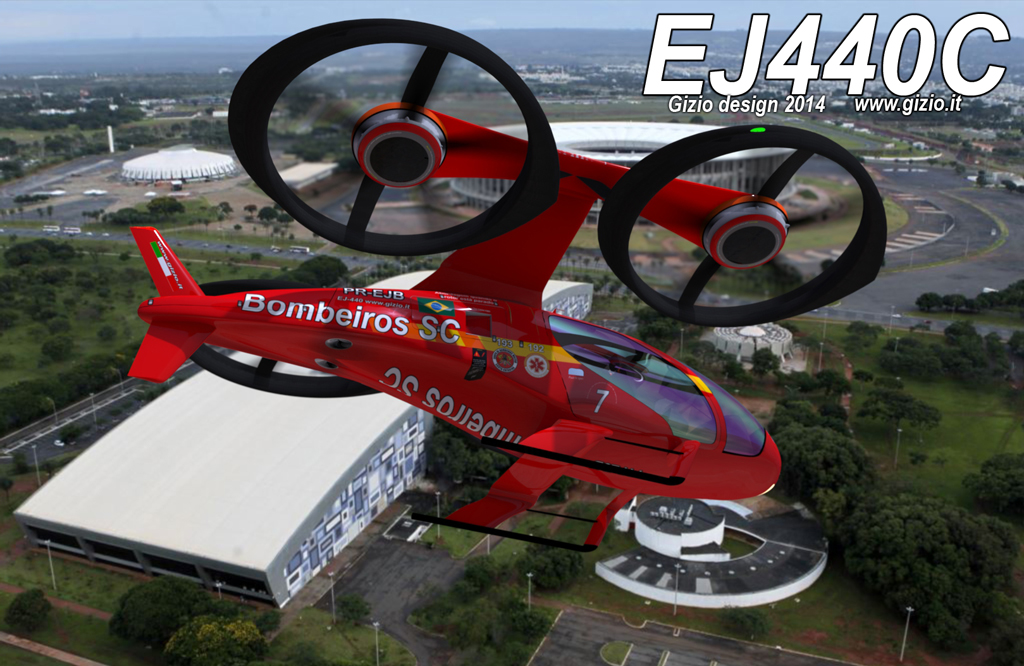
Since the beginning (1996) I did realize that a computing platform was necessary to keep a such type of aircraft in flight because many were the problems belonged to the stability question, so the AFC system was designed to act on three different levels. The first level (mode ONE)is that of extreme security. It allows a novice pilot to fly the aircraft in perfect autonomy. In this mode the machine is even able to perform an automatic take-off with positioning in hovering, or to land automatically from a hovering position autonomously. In CellCraft projects, the AFC already included a further function that we may call Self-tutorial, indeed the machine was able to teach basic maneuvers even to a zero hour or inexperienced pilot.
In mode
TWO, on the other hand, the pilot has greater flexibility and
can fly the aircraft in a more expert manner, being able to perform
even demanding maneuvers, but always within the safety parameters, ensuring
a flight in all conditions rather comfortable and without extreme accelerations.
In mode THREE instead an experienced pilot can fly
the machine beyond the perspectives of the two previous modes, being
able to perform acrobatic or extreme maneuvers. Also in this case however,
the AFC flight management system prevents the overcoming of structural
limits such as the VNE, which is automatically calculated instantly
by the machine throughout the course of the flight as well not overgoing
over the structural limits of the main cell.
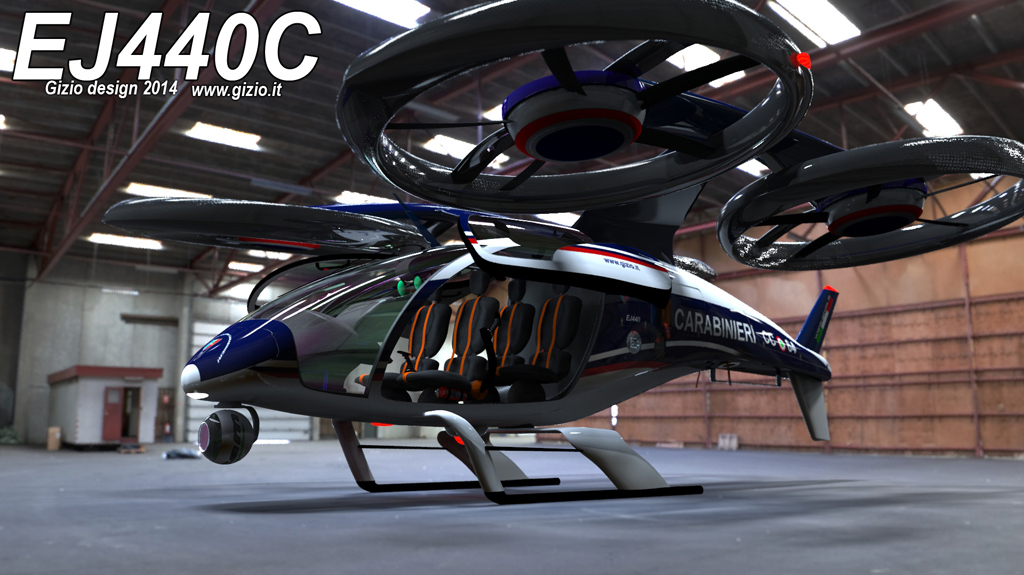
The EJ440 is particularly suitable for police force employement, this aircraft allows you to land even in a parking lot with obstacles around thanks to a radar system that is automatically activates during the landing phase, capable of identifying potentially dangerous obstacles surrounding the machine that could jepardize the flight or eventually any landing maneuvre, providing an on-screen a sort of map that the pilot can use even in a night flight to bring the aircraft safely on the ground. This device warns the pilot both through a graphic representation of the obstacles as well through an acoustic warning 4 audio channel signals, indicating the obstacle, its position and the distance with respect to the bow. So: Obstacle 12 at 3, means frontal obstacle three meters from the rotor ring, or: Obstacle 6 at 5, means that the obstacle is behind five meters from the rotor rings.
Through the numerous flights performed remotely with Icarus, and subsequently with Phegasus I kept the both machine in flight totaling 465 flight hours, of which at least 60 through remote vision systems FPV through I was able to expierience all the theoretical aspects related to my projects that had remained largely on paper until then, finding exactly what was in my expectations. The FPV remote vision system in fact allowed me to simulate the flight on board the aircraft, which in truth did not surprise me much in its general behavior, since being a commercial helicopter pilot I had some familiarity with that kind of cockpit-view like, although some differences emerged during flight missions, indeed multirotor aircraft in some maneuvers are less demanding than a helicopter, such as in sideways flight for example.
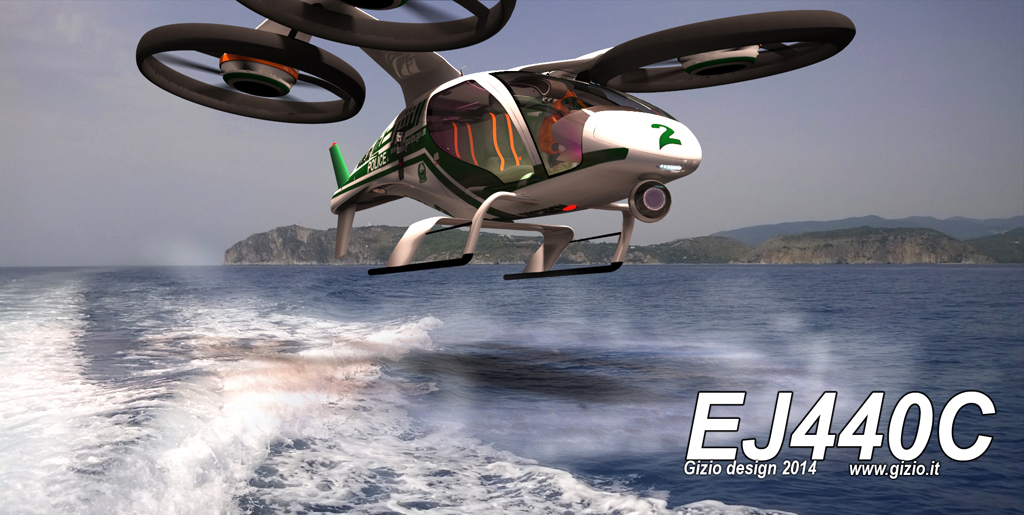
In a multirotor this is not necessary, as it will be sufficient to tilt the directional control laterally, so that the pair of rotors of one side exert a greater thrust opposite to those on the other side side. The weight of the machine would be unbalanced in the direction of motion which correspond of the rotor exerting less trust and this would allow the aircraft to be slightly titled moving sideways without any yaw correction.
This is just an example of the difference between flying a helicopter versus a multi-rotor with an equal number of rotors which in our case are four.
The flight of an aircraft of this type is undoubtedly extremely comfortable, not too demanding and this happens thanks to the AFC flight control system. The small multi rotor now widely commercially available, have in fact a very similar device that largely operates based on the same principle, ensuring a perfect stability in flight thanks to the terrific application of electronics and complex algorithms. (Read Multirotor Stability Italian version only)
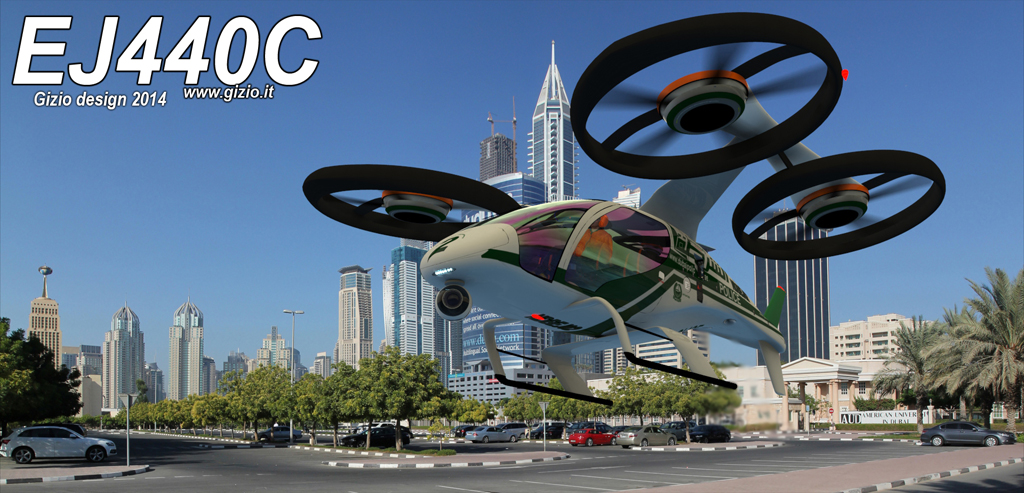
The
EJ440 is largely made of
thermoplastic material and aluminum mainly concentrated in the central
body, while the rotor rings are covered with a two shell made of carbon
fiber. The main frame is in preformed and welded aluminum like that of
an automotive bodywork, while thermoplastic panels cover the supporting
structure.
The conjunction between the fuselage and the rotors, including the rotor
rings themselves, are formed by a tubular aircraft steel structure welded
with numerical control machines. In particular, the two lateral pillars
that go towards the rotors are covered with an aerodynamic profile that
generates a discrete lift in translated flight.
The two arms that support the rotor rings, one on each side, are crossed
by the power cables of the induction motors, and a pair of two-way optical
cables caring information in and out to the digital motor control units,
EMDU (Electric Motor Digital Unit),
these provide real time management of the rotation of the motors in accordance
with the information sent by the AFC according to pilot
maneuvres to respond to the instant demand of like instant RPM, Torque
etc.
Each ring is equipped with two electric motors mechanically connected
to an carbon five-blade rotor. The rotor is settled in a carbon ring which
protects it from external obstacles, and reduces the peripheral turbulence
of the blades almost completely, canceling the induced drag that the rotor
would generate if exposed to the eternal. The ring has an aerodynamic
shape designed to allow it to penetrate the air with low drag, allowing
the rotor to be enveloped by the aerodynamic flow in traversed flight.
Landing skids behave in translational flight like a sort of stabilizers,
and at the same time thanks to their flexibility they are able to cushion
a relatively hard landing in case of emergency.
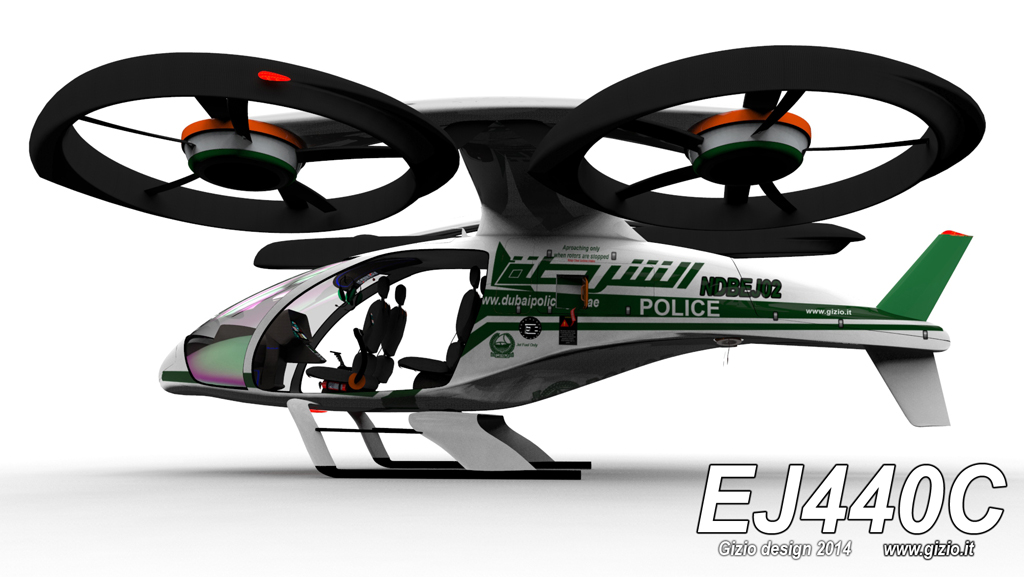
The cabin is quite large, and accommodates three passengers and a pilot without restrictions. The four seats are pneumatic, very light and technologically deriving from the SmartChair designed for the CellCraft models, therefore equipped with directional controls and yaw setteld on the right and power controls on the left, both mounted on either side of the control chair on the armrests. The left armrest can be tilted allowing the pilot to have easy access in the aircraft's cabin. Once seated he can lower the armrest and use the power lever.
The EJ440 "exists" in three main versions, the B version, designed for civilian application like the Brazilian firefighters flying unit, then there is the C and D version designed for use in the police force, as in the version of the Carabinieri or the Dubai police one, both equipped with high resolution cameras and thermal night vision system.
Features
The EJ440
is equipped with two MPU (Main Power Unit) capable
of generating 250Kw (335hp) each, which feed the eight
90Kw motors (maximum thrust) each. The machine is able to fly
even with a single MPU unit if empty with a single
pilot on board at an altitude of less than 800 m (2650 feet)
ASL.
The machine is equipped with an emergency battery unit that guarantees
a safe flight of no more than 5 minutes, enough to allow the pilot to
make a safe landing.
The weight and balance excursion of the EJ440 is very
wide. The aircraft is equipped with a system capable of weighing the
machine on the ground thanks to sensors settled in both landing skid,
that provide for this measurement. The loading system issues a W/B map
capable of providing the pilot with information on the position and
load shifting with respect to the CG of the aircraft
during the loading phases.
The machine weighs 987 kg empty and is capable of reaching
a maximum speed of 320 km / h ASL equal to 172
nautical miles / h.
Today, although there is a great availability of high technology almost in all sectors, it seems difficult to outline a new horizon in aviation which could allows for the development of new aircraft types alternative to helicopters, but it will be a matter of time and the market will have to face with more interest in this type of projects.